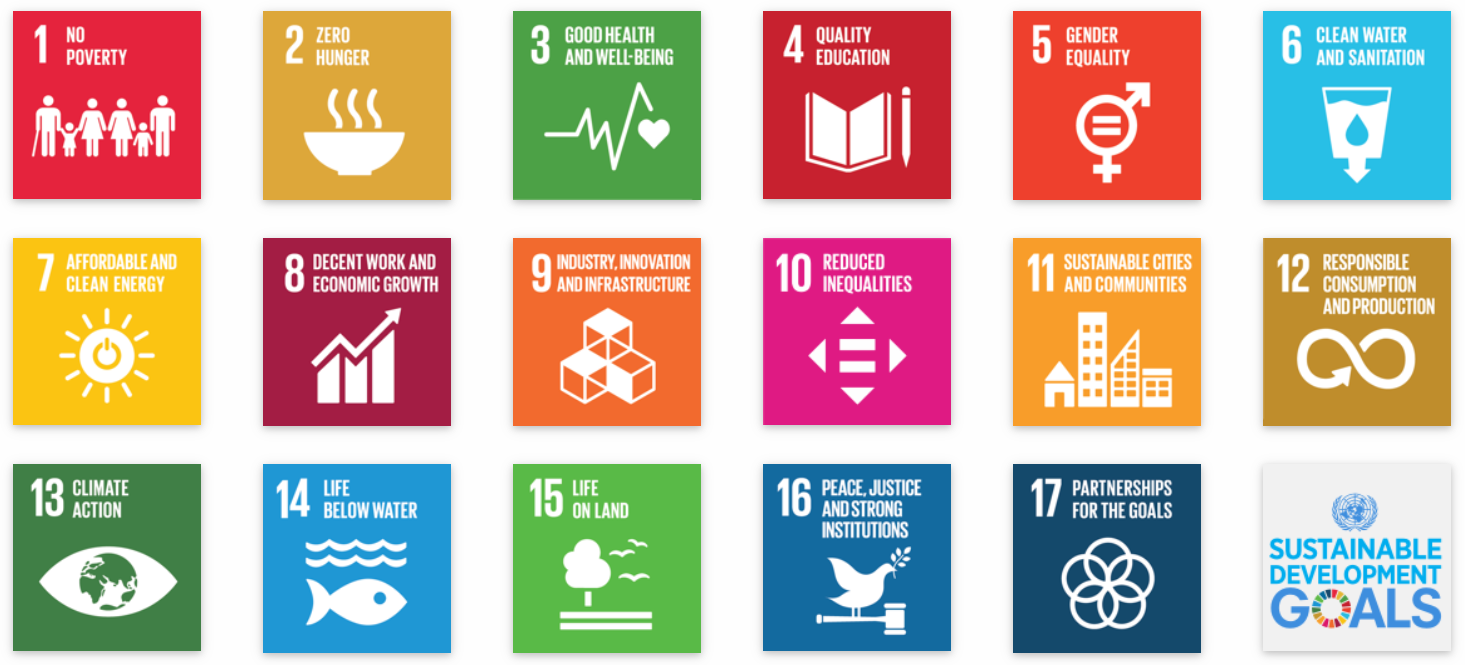It’s the 77th Session of UNGA (UN General Assembly), so it’s the perfect time to dig into how communities are inextricably linked to social impact and The Global Goals also known as the The Sustainable Development Goals or SDGs for short.

What are SDGs?
The Global Goals aim to solve some of the world's most pressing problems, such as inequality and climate change. As universal goals, the SDGs are designed to address the urgent environmental, political, and economic challenges our global population faces today.
UN Sustainable Development Goals (SDGs) provide an effective mechanism for understanding high-priority social needs worldwide. Additionally, they can serve as an excellent starting point for social initiatives, campaigns, and social impact organizations can act as a catalyst for forming wide coalitions and alignment for common goals.
Goals at a Glance

Your community has the potential to make a difference for its members and for the world at large. To identify which goal is most relevant to your work or community, use the list below as a guide:
- No Poverty: End extreme poverty in all forms by 2030.
- Zero Hunger: End hunger. Achieve food security and improved nutrition. Promote sustainable agriculture.
- Good Health and Well-Being: Ensure healthy lives and promote well-being for all ages.
- Quality Education: Ensure inclusive and equitable quality education. Promote lifelong learning opportunities for all.
- Gender Equality: Achieve gender equality. Empower all women and girls.
- Clean Water and Sanitation: Ensure availability and sustainable management of water and sanitation for all.
- Affordable and Clean Energy: Ensure access to affordable, reliable, sustainable, and modern energy for all.
- Decent Work and Economic Growth: Promote sustained, inclusive, and sustainable economic growth. Provide full and productive employment with decent work for all.
- Industry, Innovation, and Infrastructure: Build resilient infrastructure. Promote inclusive and sustainable industrialization. Foster innovation.
- Reduced Inequalities: Reduce inequality within and among countries.
- Sustainable Cities and Communities: Make cities and human settlements inclusive, safe, resilient, and sustainable.
- Responsible Consumption and Production: Ensure sustainable consumption and production patterns.
- Climate Action: Take urgent action to combat climate change and its impacts.
- Life Below Water: Conserve and sustainably use the oceans, seas, and marine resources for sustainable development.
- Life on Land: Protect, restore, and promote sustainable use of terrestrial ecosystems. Sustainably manage forests. Combat desertification. Halt and reverse land degradation. Halt biodiversity loss.
- Peace, Justice, and Strong Institutions: Promote peaceful and inclusive societies for sustainable development. Provide access to justice for all. Build effective, accountable, and inclusive institutions at all levels.
- Partnerships for the Goals: Strengthen the means of implementation and revitalize the global partnership for sustainable development.
Social Impact + Community Building = Peak Member Value?
Often, social impact communities are networks of many stakeholders that mobilize and foster social innovation (for example, identifying and promoting new approaches to meeting a sustainable development goal).
If your community embraces social impact at its core, it will accelerate its value for members. By participating in your community, your members become both a part of your community and a larger movement as well. This acceleration, however, takes time and effort. If you haven't done an internal Community Roadshow, you should start by focusing internally so you can be vocal about your intentions and follow through in a meaningful way with your community.
Having identified at least one Sustainable Development Goal that you support through your mission or work, let's talk about how you can showcase this value:
Non-Profit Communities
Your work as a non-profit is likely to have a social impact. In your community, you should contextualize what you are doing, whether you are an organization or a community. It is common for nonprofit community members to not understand the big picture of how their contributions (whether they are volunteers, donors, or otherwise) relate to your organization and larger movement.
Here are some quick tips
- Answer both the why and how of your community, this will allow you to succinctly determine the work you are doing.
- Provide a space in your community to explain which SDG(s) you support and how you do it.
- Include a visual or interactive element here to show your members how they contribute to your mission or larger impact.
|
Looking for an example? Check out how Planet Ark is folding in sustainability to their community to meet their mission. |
Education Communities
Higher education is closely linked with the Sustainable Development Goals. As an institution, you are expected to contribute to your local community, the global community and your university community (e.g., students, alumni, faculty, and staff). We highly recommend using the SDGs to provide a ‘systems approach' lens to help students develop a well-rounded understanding of how global challenges need to be addressed and their larger role in your community.
Here are some quick tips
- Take the time to answer both why, what, and how (e.g., why are your members gathering? what are they gathering for? how are they looking to connect?) of your community is essential as it will help you determine what your community is and is not (example: this community is for alumni, not current students).
- Your next step should be to determine what your member's biggest value add is and to demonstrate it. If you invite members into your community, they should be joining a community designed with them in mind, complete with information about how this value is delivered. You may want to provide a space in your community to explain what SDG(s) you support and what programs you support. You can, for instance, publish a blog that overviews the ways your organization is contributing to the SDGs.
|
Looking for an example? Check out how the University of Notre Dame is folding in sustainability to their community to meet their mission in addition to providing a Sustainable Development concentration within their Master of Global Affairs (MGA) program. |
Corporate Communities
As part of the Sustainable Development Goals, companies are encouraged to invest in, develop, and implement business practices that support sustainable development. The goals encourage companies to reduce their negative impacts while increasing their positive contributions to sustainable development. SDGs will be achieved to a large extent based on the extent and speed with which companies around the world develop more sustainable and inclusive business models. As a result, all companies are affected by the challenges that the SDGs seek to address.
Here are some quick tips
- Utilize the SDG Compass to understand how the SDGs will impact your business - and how you can place sustainability at the center of your strategy.
- Take a look at the Business and the SDGs: A Framework for Effective Corporate Involvement to better understand the ways this framework for making corporate strategies effective for sustainable development.
|
Looking for an example? Check out how the Taco Bell Foundation is folding in sustainability to their community to meet their mission. |
Business & Social Impact
The Sustainable Development Goals (SDGs) set out a roadmap for stakeholders to reduce their negative impact and maximize their positive contributions. But, they will only be achieved to a large extent based on the extent and speed with which companies around the world develop more sustainable and inclusive business models.
How Can You Capture and Document Impact?

As a whole, social impact delivers six key benefits for business:
- Builds Trust for Community
- Keeps Employees Engaged
- Attracts Loyal Customers
- Creates Meaningful Change
- Ensures Sustainability
- Tells A Story People Care About
Select up to three key benefits and keep it simple with tracking progress. For example, add Y/N metrics to your monthly metrics or KPIs.
How Can You Track Growth?
We recommend using Feverbee's framework for tracking growth and activity. If you’re a newer community or you’re only just adding social impact as a new lens element to your members this will help you track how it resonates with members. If you’re an existing social-impact community, take a look at the framework as a whole and the other metrics.
Hivebrite is an all-in-one community management platform. We empower organizations of all sizes and sectors to launch, manage and grow fully branded private communities. Schedule a demo today!



%20(1).png?width=1650&name=hivebrite-logo%20(2)%20(1).png)